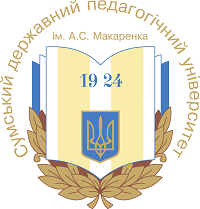FEATURES OF POST-TRAUMATIC STRESS AND RESILIENCE OF ARMED FORCES OF UKRAINE
DOI:
https://doi.org/10.32782/psyspu/2024.2.6Keywords:
traumatic event, post-traumatic stress disorder, psychological exhaustion, resilience, social resources, adaptation, mental healthAbstract
Post-traumatic stress was first identified in relation to war experiences and essentially involves three distinct clusters of symptoms: re-experiencing the event (flashbacks), persistent avoidance of any stimuli associated with the event, and increased arousal. The duration of symptoms must be at least one month and they must have a negative impact on daily life. When diagnosing post-traumatic stress disorders, the criterion is that the event that causes it is evaluated by a person as traumatic. Adverse factors, such as compulsivity, fatigue, or a history of nervous disease, may lower the threshold for the development of the syndrome or worsen the course, but they are never necessary or sufficient to explain its occurrence. The situation with combat veterans is particularly difficult, where PTSD is very common and particularly resistant to treatment and psychotherapy, because in war it is customary to remain silent more than to speak, and silence itself increases the progression of PTSD, and vice versa, voicing trauma, including moral, contributes to the development of resilience or psychological stability. Resilience is achieved in the following ways by demonstrating better results than expected in people from the risk group, that is, those who have experienced trauma, and participation in combat operations is always a multiple trauma, intensified by moral trauma and grief; positive adaptation despite the fact that the experience was stressful and recovery from adverse events. Despite the many definitions of resilience, it can be said that what is common to all these descriptions is the ability to return to the initial state and successfully adapt, it is this ability that the military can develop with the help of a psychologist. According to the results of our research, all military personnel have prerequisites for the development of PTSD, but lifestyle has practically nothing to do with it, since the war continues and the main thing is to survive the rotation - from zero to rest, which is often expressed in the treatment of wounds and visits to the funerals of comrades. It has been established that military resilience is traditionally considered from the point of view of morality, so psychologists should pay attention not only to the diagnosis of PTSD, but also to moral trauma, the impact of which on adaptation is no less, and sometimes even stronger, than a traditional traumatic event.
References
Мельник О.В., Лукомська С.О. Вікові особливості адаптації учасників бойових дій до умов мирного життя. Вісник ХДУ. Серія Психологічні науки. 2019. Том 2, №.2. С. 26-31.
Crowson J. J., Frueh B. C., Snyder C. R. Hostility and hope in combat-related posttraumatic stress disorder: A look back at combat as compared to today. Cognitive Therapy and Research. 2001. Vol. 25. P. 149-165.
Litz B. T. Research on the impact of military trauma: Current status and future directions. Military Psychology. 2007. Vol. 19(3). P. 217-238.
Liu Y., Zhang L., Guo N., Jiang H. Postpartum depression and postpartum post-traumatic stress disorder: prevalence and associated factors. BMC psychiatry. 2021. Vol. 21. P. 1-11.
Lodha P., Shah B., Karia S., De Sousa A. Post-traumatic stress disorder (PTSD) following burn injuries: a comprehensive clinical review. Annals of burns and fire disasters. 2020. Vol. 33(4). P. 276.
Madewell A. N., Ponce-Garcia E. Assessing resilience in emerging adulthood: The resilience scale (RS), Connor–Davidson resilience scale (CD-RISC), and scale of protective factors (SPF). Personality and Individual differences. 2016. Vol. 97. P. 249-255.
Schwab W., Marth C., Bergant A. M. Post-traumatic stress disorder post partum. Geburtshilfe und Frauenheilkunde. 2012. Vol. 72(01). P. 56-63.
Straus E., Norman S. B., Haller M., Southwick S. M., Hamblen J. L., Pietrzak R. H. Differences in protective factors among US Veterans with posttraumatic stress disorder, alcohol use disorder, and their comorbidity: Results from the National Health and Resilience in Veterans Study. Drug and alcohol dependence. 2019. Vol. 194. P. 6-12.
Thomas V. J., Bowie S. L. Sense of community: is it a protective factor for military veterans?. Journal of social service research. 2016. Vol. 42(3). P. 313-331.







